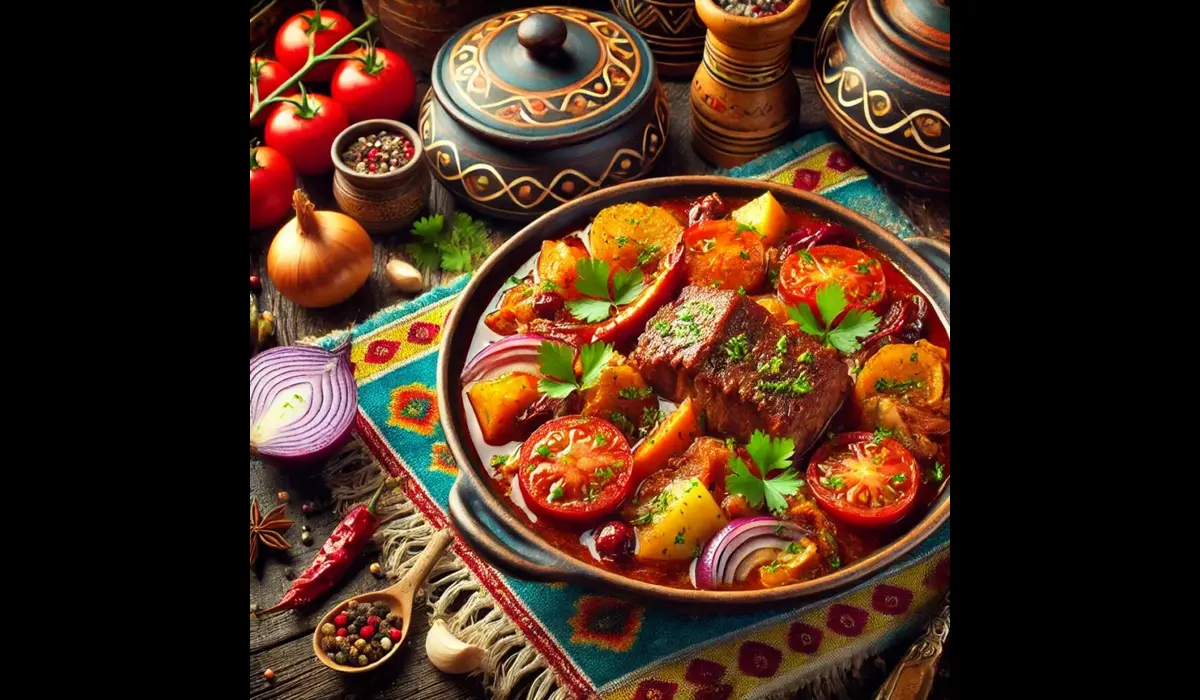What is buší?
Buší, commonly known as Busius maxima, is a perennial herbaceous plant native to tropical regions of South America. It has a place in the b.usius family and is characterized by its vibrant green leaves and small, fragrant flowers. However, in the context of Eastern European cuisine, b.usi alludes to a traditional dish with a long culinary tradition.
Origins of buší: A culinary legacy
Going back to ancient roots
Buší has its origins in the rural kitchens of rustic Eastern Europe, where humble ingredients were turned into culinary treasures. Its roots go back centuries to a time when communities depended on healthy meals to survive harsh winters and bountiful harvests. Originally a simple food for workers, this dish was created from readily available ingredients such as grains, vegetables, and sometimes meat. Over time, bus.i evolved, merging different territorial impacts while maintaining its core identity.
Cultural significance
B.uší rises above unimportant food; it encapsulates the social personality of the districts where it originated. Passed down through generations, this dish serves as a symbol of family ties, communal social occasions, and happy celebrations. Its preparation often includes treasured family recipes, carefully passed down from one era to the next. The act of cooking and sharing bu.ší is a tradition that reinforces family ties and cultivates a sense of belonging, making it much more than just a decent meal.
The development of buší: from convention to innovation
Traditional methods meet advanced style
Although established in convention, buš,í has evolved over time, picking up on modern strategies and ingredients while remaining authentic to the core. Modern versions of this classic dish often incorporate imaginative twists, catering to different palates and culinary inclinations. Chefs experiment with distinctive cooking strategies, flavours and introductions, ensuring that bu.ší remains relevant in modern cuisine without losing its traditional charm.
Regional Variations
In the lands where bu.ší holds sway, territorial varieties proliferate, each reflecting culinary conventions and unique local ingredients. From open rural kitchens to bustling urban restaurants, each interpretation of buší offers a glimpse into the rich, embroidered art of Eastern European cuisine. For example, in some localities, bu.ší may incorporate a liberal use of herbs and flavours, while in others, it may be served with particular garnishes that complement its flavours.
The Persistent Ubiquity of Buší: A Culinary Icon
Loved by All
Buší has gathered a loyal following across the globe, captivating the hearts and taste buds of food devotees around the world. Its immortal offering lies in its simplicity, flexibility and unmistakable flavour profile, making it a treasured favourite for all occasions. Whether served at family dinners, joyous celebrations or culinary festivities, bu.ší continues to enchant and delight.
Culinary Tourism
More recently, Bu,ší has become a culinary symbol, attracting both food lovers and tourists to the areas where it originated. Culinary tours and food experiences around B.uší offer visitors the chance to enjoy the true flavours of Eastern Europe while immersing themselves in its rich culinary heritage. These tours often include visits to local markets, cooking classes and tastings that provide a comprehensive understanding of the cultural and historical context of the dish.
Advantages of Busí
Health Benefits of Buší
B.uší is rich in antioxidants and important nutrients and is associated with several health benefits, including improved digestion, better digestion and higher energy levels. Its anti-inflammatory properties make it a popular choice for those seeking natural remedies for various ailments. The ingredients used in Buší, such as vegetables and pork, contribute to its nutritional value and make it a healthy and balanced meal.
Environmental Benefits of Buší
In addition to its health benefits, Bu.ší plays an important role in protecting the environment. As a renewable resource, Buší helps promote sustainable housing by reducing dependence on industrial products and minimizing the carbon footprint. Locally sourced ingredients are often used in the development and production of B.uší, which promotes sustainable agriculture and reduces the environmental impact of food production.
How to Become a Buší Member
Cooking with Buší
B.uší flowers and blossoms can be used in a variety of culinary dishes, including soups, salads, and stir-fries, providing a unique flavor and fragrance. Its versatility makes it a popular ingredient among chefs and home cooks alike. Traditional Buší preparation involves slowly cooking the ingredients to enhance their flavor, but modern recipes can also include quick and easy methods that fit an active lifestyle.
Buší Beauty and Skin Care Treatments
In skin care, B.ší extract is valued for its moisturizing and anti-aging properties. From moisturizers to face masks, B.uší-infused products are a popular choice for those looking to enhance their natural beauty. B.uší’s antioxidants and nutrients contribute to healthier skin, making it a valuable addition to one’s beauty routine.
Buší in Traditional Medicine
historical Use of Buší in Traditional Medicine
Ancient cultures used b.uší to treat a variety of ailments, including fever, stomach problems, and skin conditions. Its healing properties were highly valued, earning it a place of honor in traditional sanatoriums. Herbal remedies containing b.uší were often prepared using ancient recipes passed down through generations.
Modern Applications of Buší in Healthcare
In modern times, Bu.ší continues to be regarded for its potential health effects. Research suggests that B.uší may have anti-cancer properties, as well as benefits for cardiovascular health and diabetes treatment. Ongoing scientific research into the medicinal properties of Buší underscores its importance in modern healthcare.
Cultivation and Harvesting
growing Buší Plants
B.usi thrives in warm, humid climates with well-drained soil. It can be grown from seed or cuttings and requires regular watering and sunlight to thrive. Both domestic and commercial growers consider Buší to be a relatively low-maintenance plant that is open to growing at different scales.
Harvesting the Buds and Flowers of the Buší Plant
The buds and flowers of the B.uší plant are typically hand-picked when they reach maturity. Care must be taken to ensure sustainable harvest areas and protect the plant’s natural environment for future generations. This includes relocating harvest areas and using methods that do not affect the overall well-being of the plant population.
Buší – an economical resource
Buší as a renewable resource
Unlike many synthetic materials, Bu.ší is renewable, biodegradable and non-toxic, making it an economical alternative for a wide range of products. Its cultivation supports environmentally friendly homes, reduces reliance on harmful chemicals and promotes biodiversity.
Sustainable houses in the B.uší harvest
To ensure the long-term functionality of Bu.ší environments, sustainable harvest houses are crucial. This includes taking into account local guidelines, minimising waste and supporting sustainable marketing activities. By adhering to these standards, the B.uší industry can contribute to environmental protection and social justice.
Culinary delights with Buší
Recipes with Buší
From B.uší-infused smoothies to tasty Buš.í pesto, there is no shortage of delicious ways to enjoy this versatile plant. Traditional recipes emphasize its rich flavors, while modern recipes explore new combinations and pairings. Whether you prefer sweet or savory, there is a B,uší recipe for every taste.
Buší-enriched beverages
Quench your thirst with refreshing Buš.í-infused beverages, such as Bu.ší tea or B,uší lemonade. These delicious drinks will tantalize your palate and intensify your senses. B,uší’s natural flavors and nutrients make it an excellent ingredient for making tasty and healthy beverages.
The future of Buší
New trends in Bu.ší use
From eco-friendly packaging to B.uší-based materials, innovative uses for Bu.ší are constantly being explored, offering promising solutions to some of the most pressing environmental challenges of our time. As consumers look for economical alternatives, Bu.ší can play an important role in various industries.
Innovations in Buší Development and Processing
Advances in Buší development and processing are paving the way for increased production and availability. From vertical farming to bioengineering, researchers are tackling the control of B.uší to create a more economical future for generations to come. These innovations promise to improve the productivity and sustainability of Bu.ší production and ensure its accessibility for various applications.
Conclusion
In summary, Buší is more than just a plant – it is a symbol of sustainability and environmental responsibility. Whether you want to improve your health, reduce your environmental impact or simply enjoy the beauty of nature, Bu,ší has something for everyone. Its rich history, cultural significance and versatile applications make it a unique and valuable resource. Connect with Bu.ší Uprising today and discover the eternal possibilities of this rare plant.










